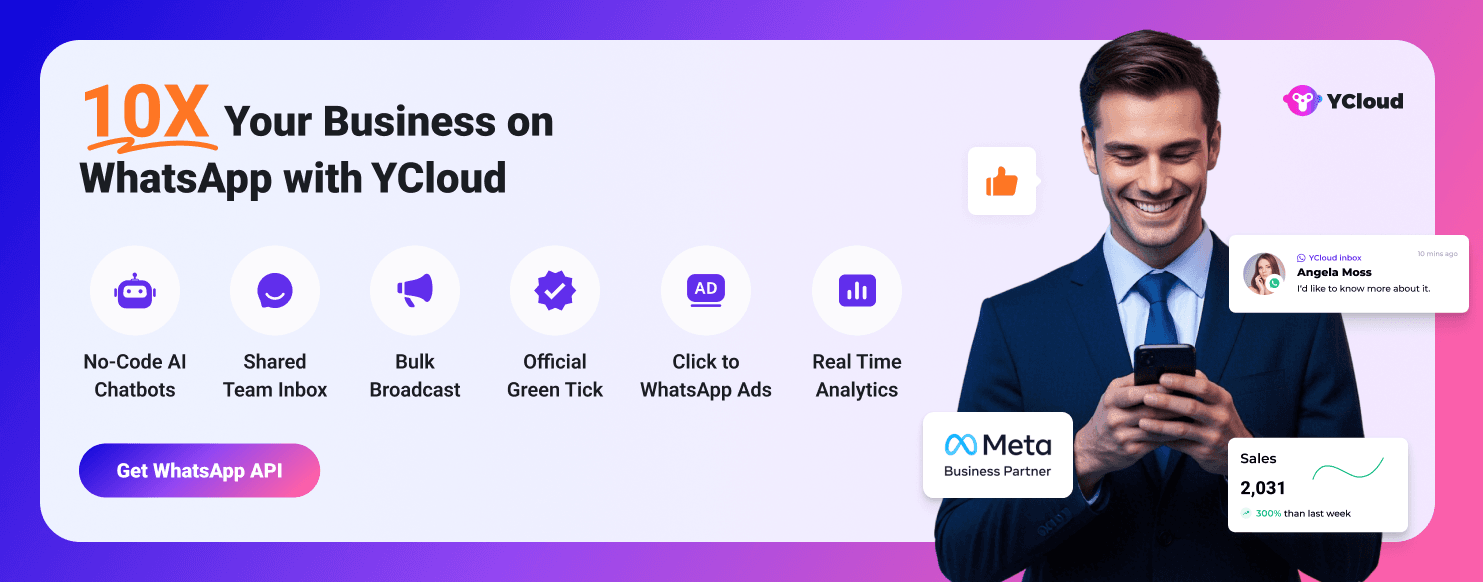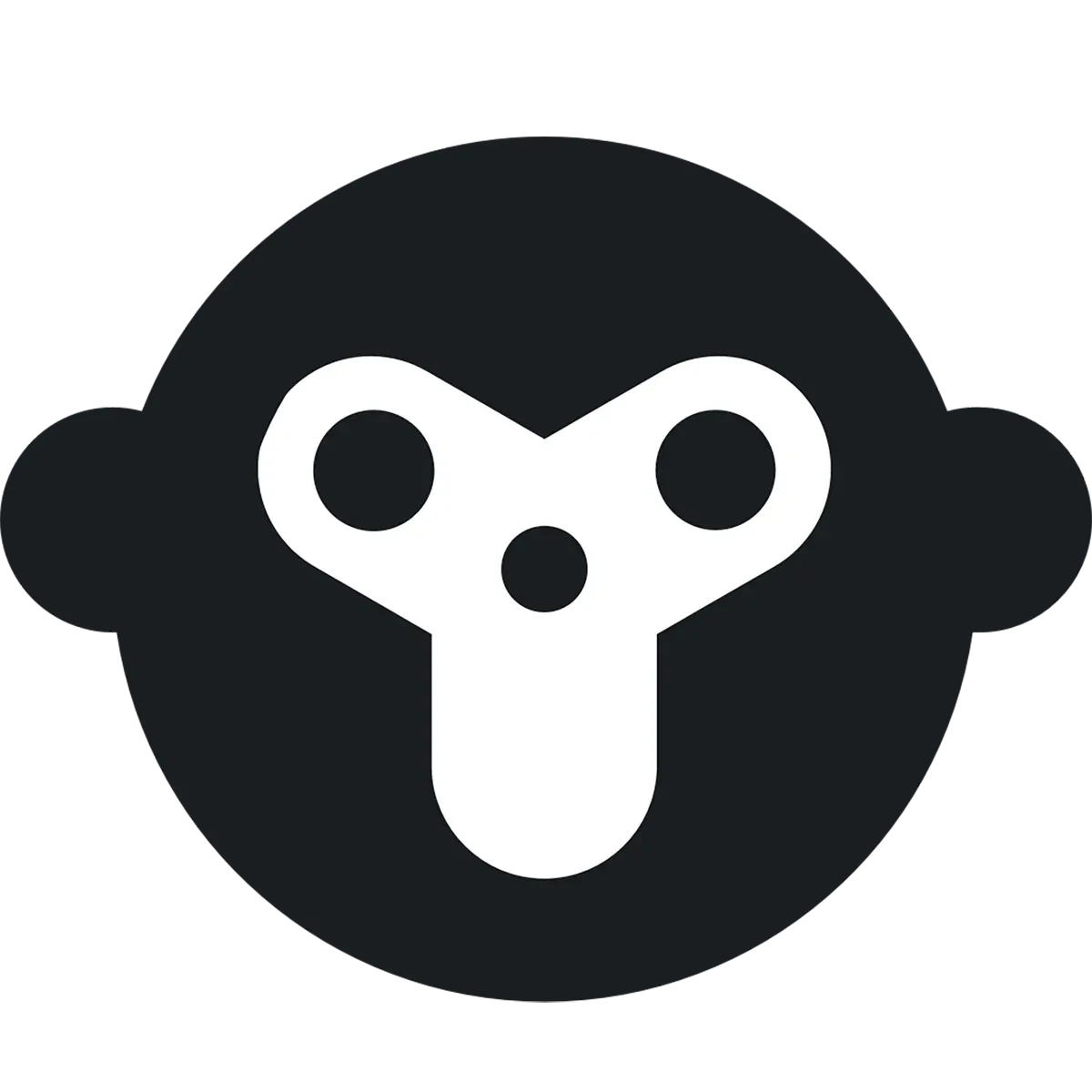WhatsApp Business API Pricing Update: Everything Changes from July 1, 2025
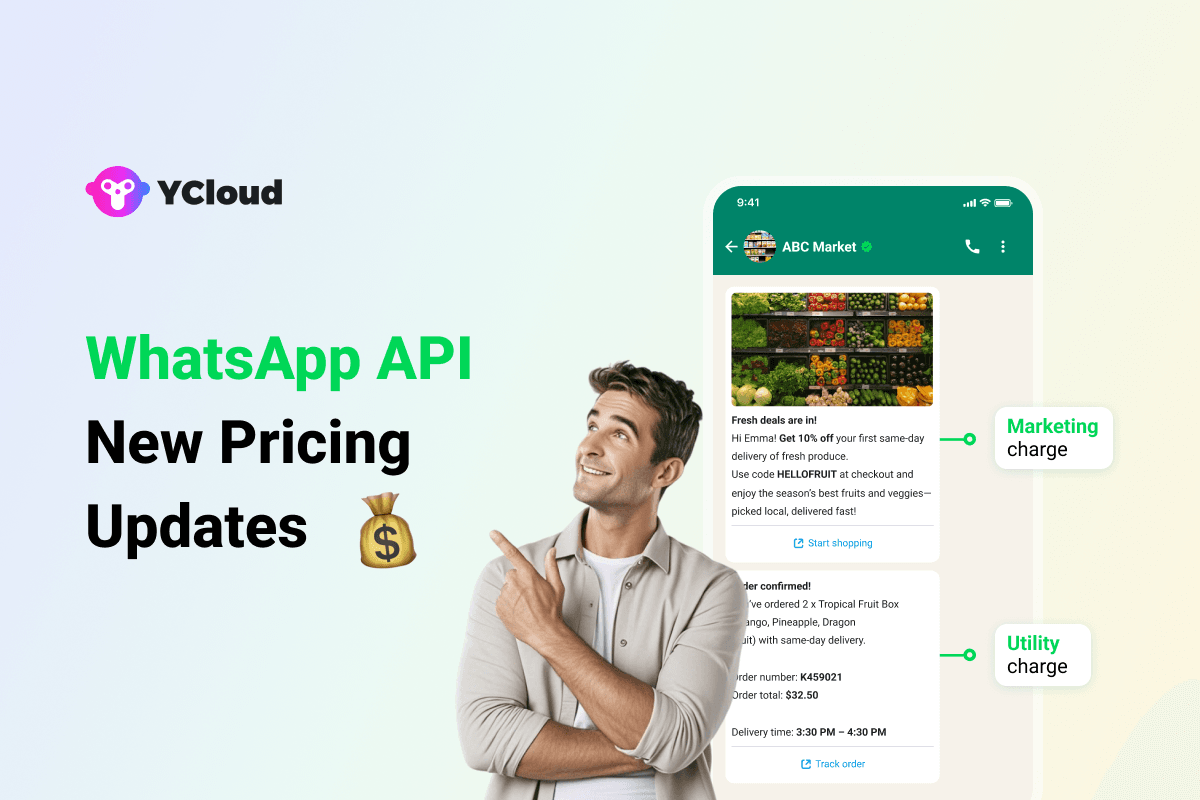
Effective July 1, 2025, WhatsApp is making its biggest pricing overhaul yet, and if your business is using WhatsApp for marketing, notifications, or authentication, this affects you.
No more conversation-based pricing!
Every message will now be metered, measured, and billed!
But it’s not all bad news. If you play it smart, and this guide shows you how, you can actually save big, especially if you rely on utility or authentication templates.
Let’s kick off with a quick summary of everything that’s changing 👇
CLICK HERE to access the WhatsApp API Pricing - Comparison Table of the OLD v/s NEW pricing analysis + clear before and after comparisons.
✅ What’s Changing from July 1, 2025?
Per-Message Pricing Goes Live
WhatsApp is dropping the conversation-based pricing model. You’ll now be charged per message, not per 24-hour conversation basis window.
Utility Templates Inside CSW (Customer Service Window) Are Free
Utility templates sent within an open 24-hour customer service window are completely free.
Outside that window? Billed as usual.
Volume Tiers Introduced
The more Utility or Authentication messages you send, the cheaper your per-message rate becomes (up to 20% off).
Authentication Rates Drop Sharply in Many Markets
Big cost reductions for OTPs and login codes in LATAM & APAC, up to 78% cheaper in some regions.
Free Entry Point Conversations Stay
Replies to users from a Click-to-WhatsApp ad or Facebook Page CTA will still open a 72-hour free messaging window.
New pricing_analytics Field Added
Get granular visibility into what each message costs with this new API field.
📌 The Pricing Shake-Up, Explained
If you’ve ever puzzled over WhatsApp’s conversation windows, overlapping fees, or why sending a single message triggered a full-day charge, this update is for you!
Starting July 1, 2025, WhatsApp is streamlining everything:
📬 Every template message = one charge
🕒 No more confusing conversation logic
💡 More ways to save — if you message smart
This guide breaks down the new pricing model in simple terms, with real-world examples, tips to avoid overspending, and everything you need to keep your costs (and stress) low.
Real-World Pricing Example
Let’s say you send a marketing template to a user, followed by two utility templates.
- You’ll be billed 3 times: once for the marketing template and twice for the utility ones.
- But — if those two utility templates are sent during an open customer service window, only the marketing template gets charged.
That’s a 66% savings — just by timing your messages right.
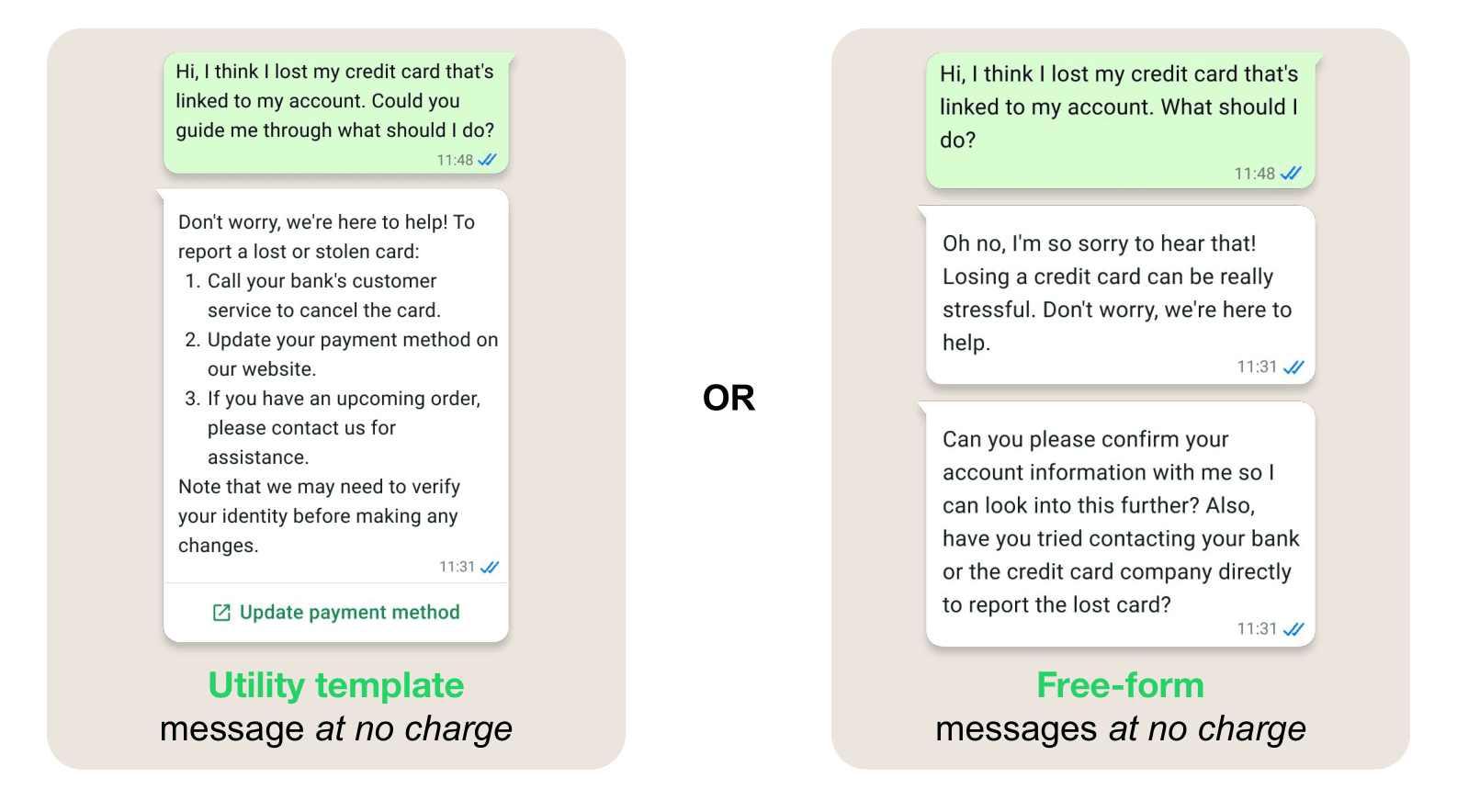
The New Per-Message Pricing Model: What It Means?
Starting July 1, 2025, WhatsApp is switching from Conversation-Based Pricing (CBP) to Per-Message Pricing (PMP), a move designed to simplify billing and align with industry standards.
Here’s how it works:
Message Type | When It's Charged | Notes |
|---|---|---|
Marketing Template | Every time a message is delivered | Billed per message. No change in unit price across markets. |
Authentication Template | Every time a message is delivered | Rates reduced in most LATAM & APAC countries (up to 78% lower). |
Utility Template | Only charged if sent outside the Customer Service Window (CSW) | Sent within CSW = FREE |
Service Message (Text) | Free, but only allowed within a CSW | Can’t be used to start conversations |
Referral/Entry Point Message | Free during the 72-hour free entry window (after user comes via ad or Facebook CTA) | Full access to send any message type during this period |
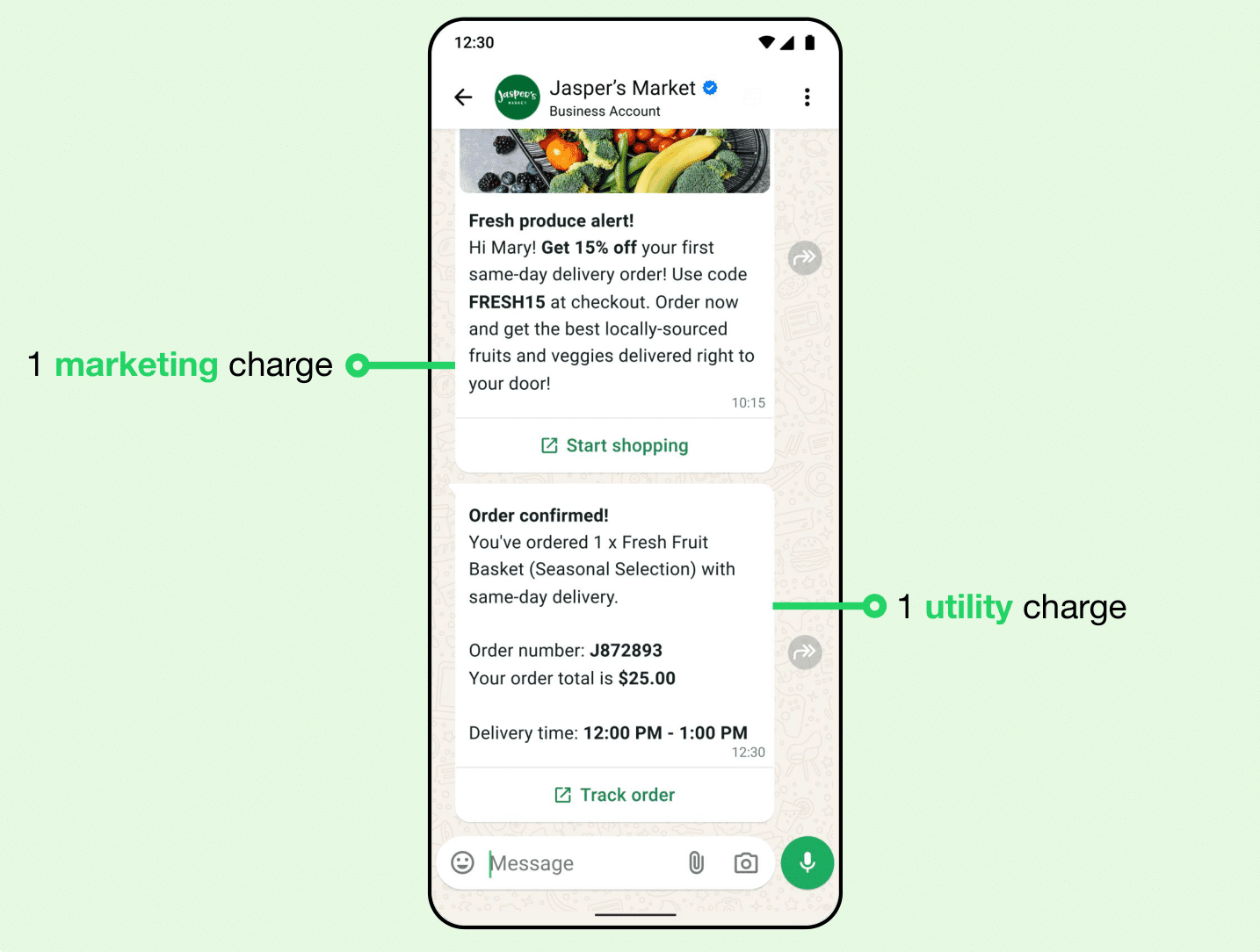
Why This Matters
Under the old model, sending a single template message could open a new 24-hour conversation window, which was then billed as a full conversation, regardless of message count.
Now? You pay only for what you send. It’s simpler, clearer, and if optimized properly — cheaper, especially for high-volume use cases like:
- Login OTPs
- Shipping notifications
- Payment reminders
- Abandoned cart nudges
Free Utility Templates Within the 24-Hour Customer Service Window
Here’s the big win for businesses:
Utility templates are completely free as long as they’re sent within an open customer service window (CSW).
What’s a Customer Service Window?
A 24-hour CSW (Customer Service Window) starts every time a user messages your WhatsApp API Account. During this window, you can send:
- ✅ Free-form service messages (text, image, audio, etc.)
- ✅ Utility templates — for free
- ✅ Marketing or authentication templates (still billable)
The clock resets every time the user replies. So as long as the customer is engaging, you stay within the CSW, and that means free utility messaging continues.
Example: How This Plays Out
Let’s say a customer asks, “Where’s my order?”
- You reply with: “Thanks for checking in! Let me look it up.” (Free text – within CSW)
- Then you send: “Your order #1234 has shipped. Expected by Friday.” (Utility template – FREE)
- You follow up with a delivery confirmation update 6 hours later (Utility template – still FREE, CSW is open)
If you wait until after 24 hours, that same utility template is now billable.
Pro Tip
Structure your workflows to reply with utility templates during CSW (Customer Service Window), not after. This alone can cut your monthly messaging costs significantly, especially for e-commerce, logistics, and subscription-based businesses.
Free Entry Point Conversations: 72 Hours of Free Messaging
Good news: Not all proactive messaging will cost you!
WhatsApp is keeping free entry point conversations, which let you message users for free for up to 72 hours, across all template types — marketing, utility, authentication, or plain text.
🟢 What Triggers a Free Entry Point?
A user engages with your brand via:
- A Click-to-WhatsApp Ad (Facebook or Instagram)
- A "Message" button on your Facebook Business Page
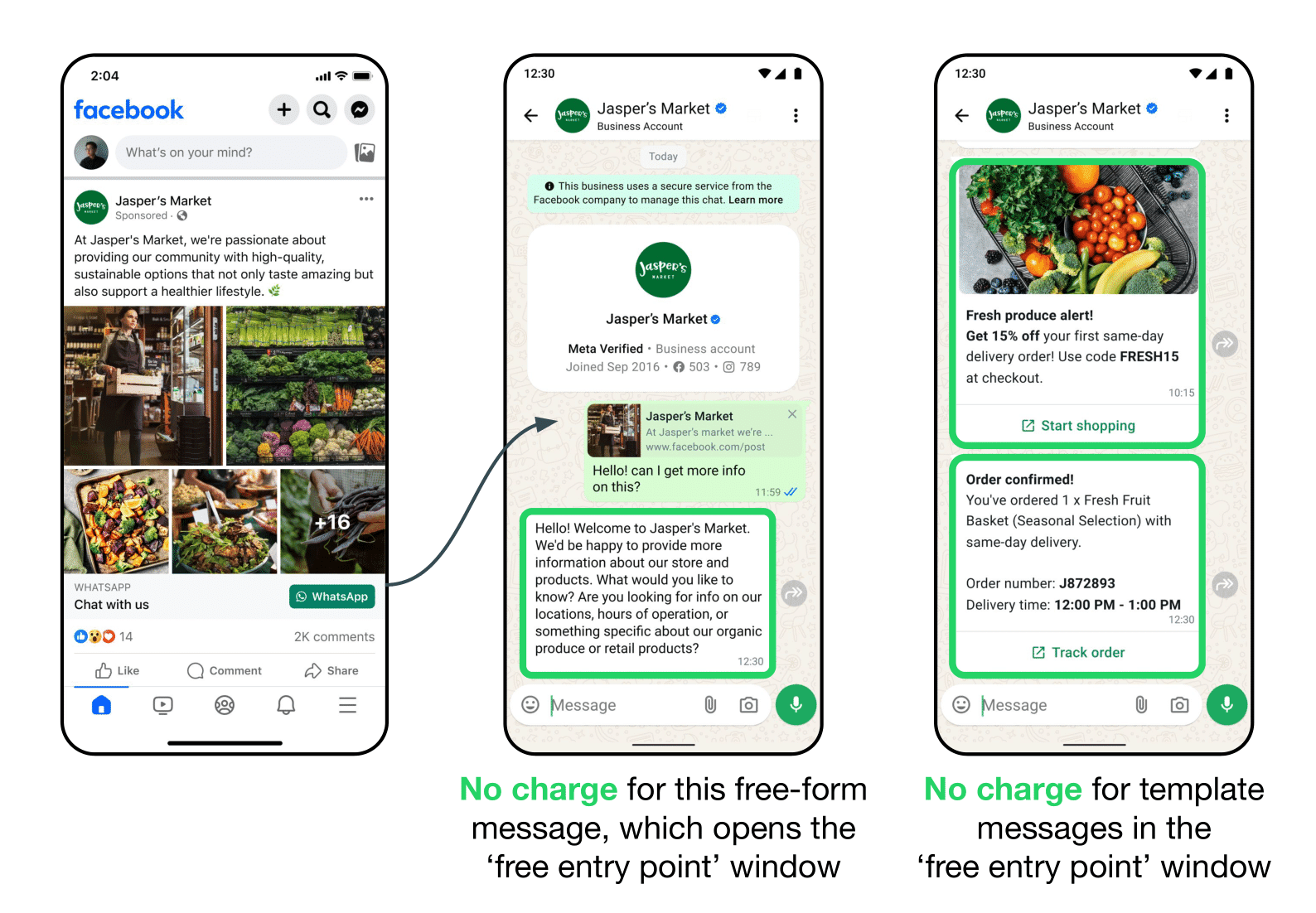
Once the user messages you:
- A 24-hour customer service window (CSW) begins
- If you reply within that 24-hour CSW, it activates a 72-hour free entry point window
During that 72-hour window:
✅ You can send any type of message
✅ There’s no Meta template charge — only provider-level fees may apply
✅ No limit to the number of messages sent
Example Scenario
Hour 0: A user clicks your Facebook ad and sends a message
Hour 1: You reply with a discount offer (Marketing template – FREE)
Hour 10: You send a payment reminder (Utility template – FREE)
Hour 36: You send an order confirmation (Utility template – FREE)
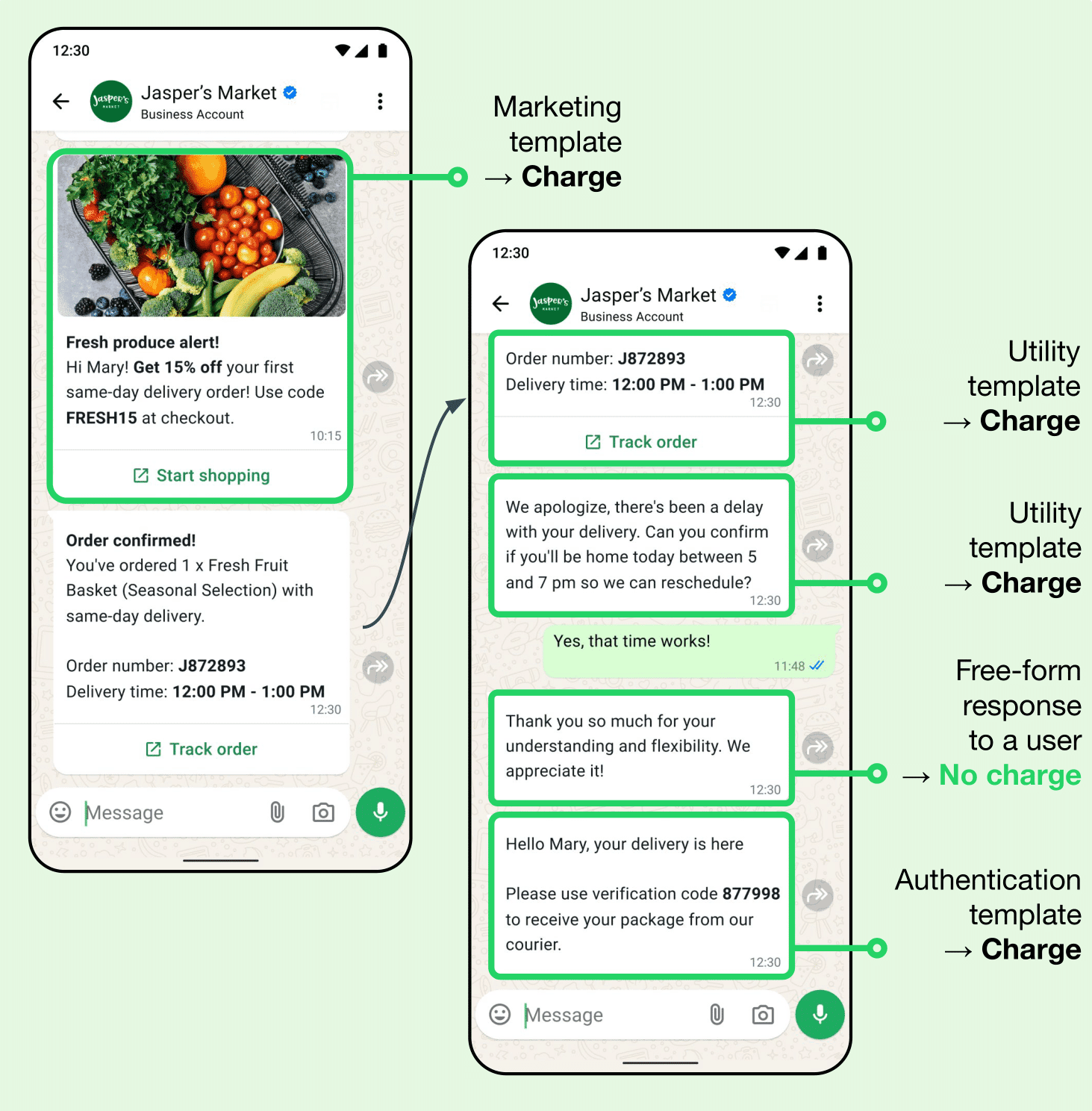
💡 All these are free as long as they fall within that 72-hour window.
Pro Tip
- Seize the opportunity to proactively push discount codes/promotional offers during those 3 days of period to reduce marketing costs.
- Leverage YCloud's marketing automation and smart chatbots to attend users who enter the window via "free entrance window" automate smart campaign bursts within those 3 days. It’s the sweet spot to push offers, update orders, or upsell with zero cost on templates.
Volume Tiers for Utility & Authentication Templates
Starting July 1, WhatsApp is rewarding scale.
If your business sends a large number of Utility or Authentication messages, you’ll automatically qualify for tiered pricing discounts, up to 20% off your base rate.
✅ Applies to Utility and Authentication templates
❌ Does NOT apply to Marketing messages (yet)
How It Works
- Tiers are monthly, reset every month
- Calculated per market and per category (e.g. India-authentication, Brazil-utility, etc.)
- The more messages you send, the bigger the discount on those above-threshold volumes
Tier | Monthly Message Volume | Discount |
|---|---|---|
Tier 1 | 0 – X messages | No discount |
Tier 2 | X + 1 – Y messages | –5% |
Tier 3 | Y + 1 – Z messages | –10% |
Tier 4 | Z + 1 and above | Up to –20% |
Note: Exact tier cutoffs (X, Y, Z) vary by country and category, based on WhatsApp’s regional pricing cards.
Example:
Let’s say you send 20,000 utility messages/month to users in India:
- First 10,000 messages = List Rate
- Next 10,000 messages = Tier 2 Rate (5–10% discount)
- Total cost = blended rate based on volume
Pro Tip
- Forecast your monthly message volume by region and category, and consolidate where possible.
- If you’re close to a tier threshold, a slight volume push could unlock significant savings.
- And remember —> YCloud charges zero markup, so any discount you unlock from Meta is fully passed through to you.
Regional Pricing Changes: Who Wins, Who Pays More?
Meta’s July 1 update doesn’t just change how you’re charged; it also adjusts how much you’ll pay depending on message category and country.
Here’s a breakdown:
🔐Authentication Templates
Biggest winner category — rates are dropping hard in many countries.
Region / Country | Change | Impact |
|---|---|---|
Brazil | –78% | Massive cost reduction for login/OTP flows |
Mexico | –65% | Ideal for fintech, app onboarding, and secure access flows |
Most of LATAM + APAC | –74% avg | Strong incentive to shift from SMS to WhatsApp |
Indonesia | –17% | Still a meaningful drop for high-volume authentication flows |
✅ If you’re sending OTPs via SMS, now’s the time to switch to WhatsApp and save significantly.
.🛠️Utility Templates
Mixed shifts depending on region, but mostly favorable:
Region / Country | Change | Impact |
|---|---|---|
Western Europe (bundle) | –43% | Great for shipping, billing, and account alerts |
Middle East (bundle) | –42% | Major savings for logistics and ecommerce |
Asia Pacific (bundle) | –28% | Strong benefit for customer service ops |
Brazil & Argentina | –15% | Slight drop, but adds up at scale |
Indonesia | +25% | The only region where utility costs are going up |
⚠️ If you operate in Indonesia, you’ll need to tighten message volume and timing to control rising utility costs.
📣 Marketing Templates
Flat pricing across all regions — but now billed per message, not conversation.
Region | Change | Impact |
|---|---|---|
All Markets | 0% change | Same unit rate, but now you pay per message |
⚠️ So while the unit cost didn’t rise, message-heavy campaigns will cost more unless carefully optimized.
CLICK HERE to access the WhatsApp API Pricing - Comparison Table of the OLD v/s NEW pricing analysis + clear before and after comparisons.
✅ Pre-July 1 Checklist: Pricing Strategy for Smart Messaging
Here’s how to prepare your WhatsApp campaigns and communication workflows before the pricing switch hits:
1. Audit All Template Usage
- Check how often you're sending marketing, utility, and authentication templates
- Identify messages that can be merged or condensed
- Tag templates with their respective categories for easy mapping and reporting
2. Rethink Campaign Frequency
- One promotional blast to many can now cost you per send, not per 24-hour window
- Prioritize content density and message timing, fewer, more meaningful messages = better ROI
3. Leverage Free Messaging Windows
- Respond quickly to user messages to activate the customer service window (24 hours of free utility + service messages)
- Push relevant offers or updates within the 72-hour Free Entry Point window after ad click-ins or Page messages
4. Maximize Volume Tier Discounts
- Forecast your monthly message volumes by country and category
- If you're close to a tier threshold, push volume strategically to unlock 5–20% savings
5. Switch OTPs and Alerts from SMS to WhatsApp
- With authentication costs dropping up to 78%, this is a golden opportunity to save
- Especially for fintech, healthcare, and onboarding journeys — faster + cheaper
6. Get Transparent Billing Insights
- Use the new pricing_analytics field to track exact costs per message
- Run campaign-level reporting to spot high-cost patterns and optimize messaging flows
7. Avoid Overspending Traps
- Don’t send multiple templates back-to-back unnecessarily
- Avoid splitting simple info across many messages (e.g. delivery + tracking + time = 3 charges)
8. Optimize for WhatsApp, Not SMS
The core of this pricing update is about billing per item and making essential messages more affordable, especially for notifications and verification codes.
To take full advantage, make sure you:
- Compare SMS vs WhatsApp costs in each target country. Switch verification and notification messages to WhatsApp where it’s cheaper, often by a wide margin.
- Cut the marketing noise. Avoid unnecessary blasts. Focus on one high-impact message at a time, and send it when it matters most.
- Leverage the free 24h & 72h windows. Time your customer engagement smartly, strike early in the conversation window to send key updates, nudges, or reminders without burning extra cost.
And remember:
With YCloud, you get zero markup on messages. That means every discount from WhatsApp is passed straight to you.
Wrapping Up!
WhatsApp’s move to per-message pricing isn’t just a technical change, it’s a whole new way to think about communication costs.
The brands that win in this new model will be the ones who:
- Message with purpose
- Leverage free windows smartly
- Optimize every send for value
- And use a platform that doesn’t eat into their margins
💡 Why YCloud is Built for This Pricing Model
YCloud is an official WhatsApp Business API provider that charges zero markup fees on messages.
Unlike platforms like AiSensy, Zoko, DoubleTick, or BotSpace, we don’t take a comission of your message volume.
What WhatsApp charges is exactly what you pay, nothing more!
✅ Fully compliant with the new pricing model
✅ AI-powered template tools that optimize cost-efficiency
✅ Free lifetime access with unlimited API usage
✅ Transparent billing, real-time analytics, and no hidden commissions
👉 Ready to Save More with Every Message?
👉 Get Started for Free with YCloud
Read Here: Meta's WhatsApp API Message Template Category Guidelines Update: Effective July 1st, 2025
CLICK HERE to access the WhatsApp API Pricing - Comparison Table of the OLD v/s NEW pricing analysis + clear before and after comparisons.
